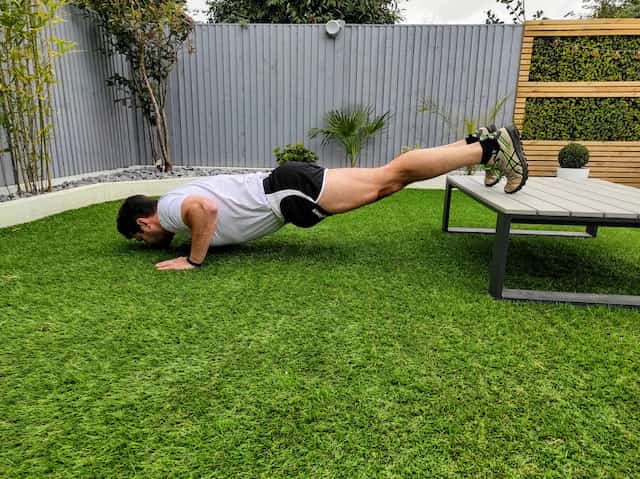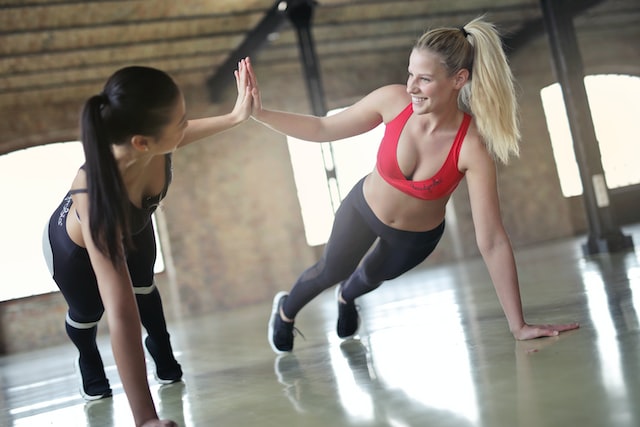Here is your complete guide to women chest exercise.
Introduction to Women Chest Exercise
What is the best women chest exercise? When working on your chest muscles, you’ll primarily target the pectoralis major and minor muscles, as well as the deltoids. These are the muscles that run across your chest and under your armpits, as well as those that run across your shoulders. Warming up properly before beginning the main workouts is essential for preparing yourself and avoiding injury. So What is the best women chest exercise? What you need to know about women chest exercise? Here is your complete guide about women chest exercise.
Push-ups: Women Chest Exercise

It’s a classic, but it’s a good one. The push up (or press up if you prefer) is an excellent chest exercise. Lie face down on the floor, hands in line with shoulders, and arms straight. Then, rise to your toes, maintaining a straight line from your heels to your neck. Make sure you’re not flexing your hips or bending your back. This reduces the effectiveness of the push up and increases your chances of injuring yourself.
Bend your elbows and get your chest as close to the floor as possible to perform a single push up. When you don’t keep your back and legs straight the entire time, you won’t reap the benefits. Perform a set of 10 reps, then a rest for 30 seconds before beginning again. You’re done after three sets. Increase the number of reps in each set as it becomes easier. When you want to push yourself further, add two reps to each set.
To get the most out of each push up and maintain proper form, complete each rep slowly and deliberately. If you rush through them, you will lose shape and not get as much out of each push up. Begin with stretches. Hook your fingers behind your back, for example, and raise your arms behind you. When you are doing so, try to keep them as straight as possible. After stretching, perform some low-intensity dynamic movements. Gentle press-ups against the wall for example. Anything to get your muscles moving and warm while not exhausting you.
Push-ups Made Slightly Easier: Women Chest Exercise
Keep in mind that push-ups will be a recurring theme in this piece, but trust us when we say it’ll be worth it. If you’re working out for the first time in a long time or are new to home chest workouts, standard push-ups may be a little difficult to begin with. If this is the case, there are ways to make them a little easier before progressing to a full-on push up.
To begin, instead of doing your push ups on your toes, you can do them on your knees. Then, it is still critical to keep your back and legs straight all the way down to your knees. When these become too easy, move on to the next step.
Push-ups are easier if your hand position is higher than your foot position. With this in mind, perform a standard push up, but instead of placing your hands on the floor, raise them slightly – on a sofa arm or chair seat. Everything else about the technique is the same. These are known as incline push-ups.
Decline Push-ups: Women Chest Exercise

These are, unsurprisingly, the inverse of the incline push-ups described above and are a great home chest workout. Push-ups will become more difficult if your feet are higher than your hands. Because you can lower your chest to the ground and it’s really work those pectoralis major and deltoid muscles, this is a great exercise. We only recommend trying these if you want a new challenge.
Maintain your legs and back straight, hands on the floor, and feet raised, as before. It’s a good idea to set them on a table, a garden bench, or even your sofa.
Plyometric Push-ups
The plyometric push up is another advanced home chest workout that adds extra intensity to your workout and kicks things up a notch. First, assume the standard push-up position and lower yourself to the floor. The tricky part follows. You must really explode through the next section, pushing yourself as far as you possibly can. Push yourself so hard that your hands leave the floor. Try clapping your hands during each push up if you really want to show off.
This push up variation increases the intensity and explosive power of your home chest workout. This means you’ll burn more calories and increase muscle stamina.
Remember to keep your press up form intact before attempting any of these more advanced push up variations. Before moving on to these more difficult progressions, make sure your technique is rock solid.
Diamond push-ups

Another progression from the standard push up. Instead of having your hands shoulder width apart, try having them underneath your chest, with your thumb and index finger touching. This is an excellent addition to your home chest workout routine because it also works your core muscles in addition to the chest and arm muscles we’re already recruiting.
One-leg push-ups
To complete this home chest workout, you’ll need some serious strength. Begin in the standard push-up position, then raise one leg up. Finish your set of reps (try to get to 10) while keeping your glutes tight. You could also alternate legs between reps. Just make sure you do an even number of reps for each leg.
Read Also: The Surprising Health Benefit of Celery Tea.
‘Spider-Man’ Push-ups

Finally, this push-up variation is an excellent addition to any home chest workout regimen. Begin in a standard push-up position, but bend your elbows so your chest is lower than theirs. Bend one of your knees and bring it up alongside you as you do this. Hold this pose for a few seconds before returning to the starting position. Then repeat with the other leg. Make an even number of these in each set to work each side evenly.

